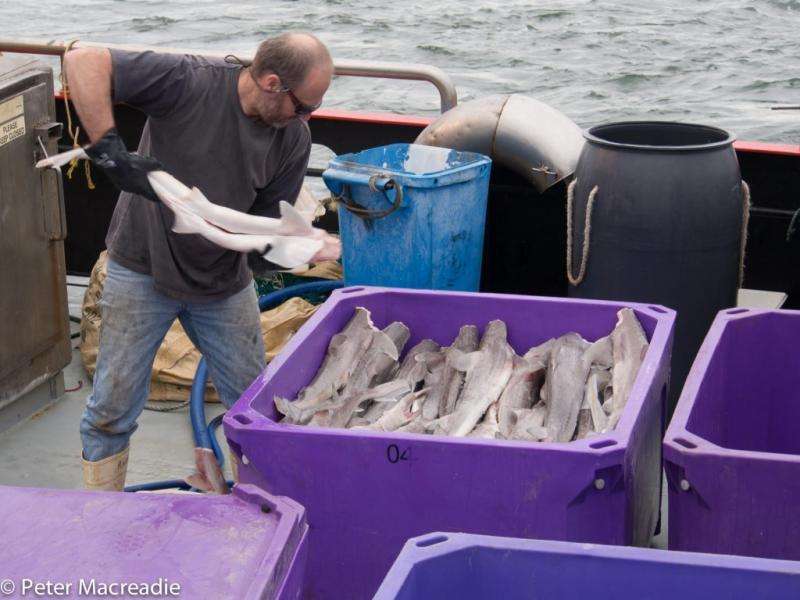Fishes' large carbon footprints to be included in seafood eco-labeling

A new study has led researchers to call for a review of seafood 'eco-labels', which currently exclude consideration of the substantial carbon footprint left by the seafood industry.
In assessing the carbon emissions at every stage of the seafood journey from the ocean to the dinner plate, researchers have previously found that seafood products can have extremely large carbon footprints – up to 14 times the product's own weight.
"In addition to fuel use in fishing – which often requires travel to the farthest reaches of the oceans – the seafood industry's carbon footprint is also the result of the energy inputs resulting from the large amounts of feed required to support fish growth in aquaculture. Of course, another key input to seafood carbon emissions is the refrigeration required at all stages of the seafood journey," said lead researcher Dr. Elizabeth Madin.
The seafood industry has become increasingly interconnected at a global scale, with fish the most traded commodity worldwide. Sustainability 'eco-labels' are widespread, but the carbon footprints of seafood products are rarely integrated into assessments of their sustainability by eco-labels, eco-certification, or consumer seafood sustainability guides.
"As a result, many 'environmentally-friendly' labeled seafoods in fact have enormous carbon footprints that the consumer may not be aware of," said Dr. Macreadie, from the University of Technology, Sydney, and Deakin University, Victoria.
"Some seafood products have much lower carbon footprints than others, however, and this is a characteristic that could potentially be selected for by consumers or businesses, such as restaurants, that buy seafood."
Typically, seafood sustainability standard take into account 1) the level of harvesting pressure and fish stock relative to 'safe' levels; 2) the use or exclusion of environmentally harmful fishing practices, and 3) the effectiveness of fisheries' management systems.
"By including explicit consideration of the carbon footprint of seafood products, seafood awareness campaigns would potentially have a far more powerful impact by not only helping to mitigate specific environmental impacts of each fishery, but by confronting the global scale problem of climate change," said Dr. Madin.
More information: "Incorporating carbon footprints into seafood sustainability certification and eco-labels," Marine Policy, Volume 57, July 2015, Pages 178-181, ISSN 0308-597X, dx.doi.org/10.1016/j.marpol.2015.03.009
Journal information: Marine Policy
Provided by Macquarie University



















